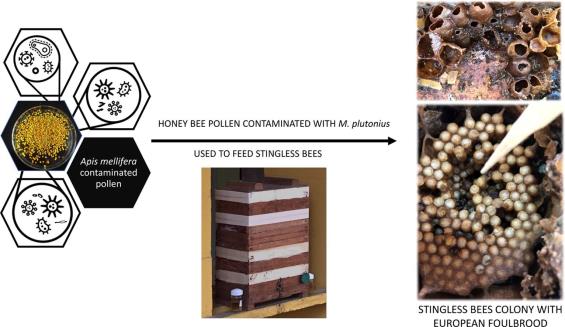Stingless bee keeping (meliponiculture) is increasing rapidly in Brazil especially using the large native Melipona stingless bee species. Stingless bee products have been used since pre-Colombian times in Central America, when Mayan civilizations managed Melipona species, practicing meliponiculture for food and medicine. In recent times, stingless bee-keepers are increasingly feeding pollen and honey of the introduced honey bees Apis mellifera to their colonies. This practice can be a hazardous source of disease.
Researchers tested for the presence of pathogens commonly found in honey bees in diseased colonies of Melipona stingless bee species in Brazil. They detected the causal agent of European foulbrood, the bacterium Melissococcus plutonius. Associated with the bacterium were symptoms of the disease: brood death and losses of the stingless bee colonies. They tested but did not detect other pathogens including the bacterium Paenibacillus larvae, the microsporidia Nosema apis and Nosema ceranae, the fungus Ascosphaera apis, or any common honey bee viruses.
This evidence sounds a warning to stingless bee keepers everywhere of the risks of feeding their bees honey or pol-len from honey bees. This practice is known to spread the European honey bee disease, European foulbrood which occurs in all Australian states and territories except WA and NT, https://beeaware.org.au/archive-pest/european-foulbrood. European Foulbrood could even be more viru-lent in stingless bees than in honey bees.
The use of A. mellifera products contaminated with M. plutonius to feed stingless bees poses a real risk of transmission of the pathogen. All stingless bee keepers should avoid the use of honey bee products to feed stingless bees.
Citation: E.W. Teixeira, et al., (2020) European Foulbrood in stingless bees (Apidae: Meliponini) in Brazil: Old disease, renewed threat. Journal of Invertebrate Pathology, 172, 107357, https://doi.org/10.1016/j.jip.2020.107357.

